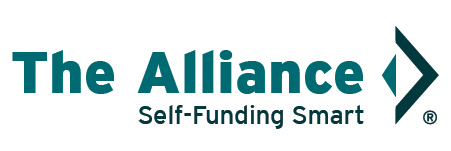How Employers Can Improve Employee Engagement in Health Care
By: Melina Kambitsi, Ph.D., Sr. Vice President, Business Development & Strategic Marketing Improving employee engagement is one of the most important elements to employer health benefits because if your employees don’t use your tools and programs, it just adds more costs. And although 88% of employers are offering mental health solutions, less than one third of employees report using them.
Improving employee engagement is one of the most important elements to employer health benefits because if your employees don’t use your tools and programs, it just adds more costs. And although 88% of employers are offering mental health solutions, less than one third of employees report using them.
That’s why The Alliance recruited workplace well-being expert Dr. Jessica Grossmeier to discuss how employers can better engage their employees in their health care.
What Influences Employee Engagement?
The HERO committee examined 60 articles on employee engagement to find six major influencers:
- Health-related factors: When employees experience acute health symptoms, they are more likely to engage in the offerings made available to them by their employer.
- Demographics: Age, race, and gender can all influence how employees engage in certain health care programs.
- Organizational factors: Employers can use specific leadership styles, establishing and building trust, and providing supervisory support for employees’ needs.
- Financial incentives: Incentivizing employees remains an effective way to improve their participation in health care programs.
- Environmental factors: Workplaces that provide adequate safety measures and promote social support between co-workers will influence their employees’ engagement in their health care.
- Communications: Employees need to be educated and reminded about their health benefits regularly.
A range of these measures is appropriate to increase engagement effectively; there is no one-size-fits-all approach.
Measuring The Effectiveness of Incentives
There are two ways to measure how employees receive their incentives. The first is through participation (sign-up, survey completion, enrollment, etc.), while the other is focused on outcomes (lower blood pressure, a healthy body mass index, weight loss, or other health improvements.)
Financial incentives are highly effective for simple, one-and-done behaviors like health surveys, flu shots, and biometric screenings.
Dr. Grossmeier and her team divided more than 800 organizations into four different groups based on how they designed incentives and found a combination of participation and health-related objectives are associated with a higher participation rate and improved health outcomes over time.
Creating a “Culture of Health”
However, workplace culture also matters. Dr. Grossmeier surveyed 1,249 employers to find the top 10 practices that drove the best results:
95% - Support at least one health-related policy
80% - Engage employees in the health and well-being initiative in at least one way
79% - Have senior leaders who see the connection between well-being and business results
75% - Have leaders who support health and well-being initiatives in at least one way
68% - Have at least one group that regularly receives program performance data
66% - Have a formal, written strategic plan for health and well-being
64% - Communicate health values in at least one way
52% - Use and support employee champions or ambassadors to promote well-being.
49% - Support mid-level managers in their efforts to improve well-being of employees within their teams
46% - Use targeted communications for specific employee groups
All of these have to do with organizational leadership and support, proving that employee engagement really is a top-to-bottom initiative.
Applying The Research
Dr. Grossmeier then covered the ways employers can use this research to create a “culture of health” at their organization:
- Provide managers with training support resources to foster wellbeing for their teams
- Support flexible work schedules and prioritize short breaks
- Prioritize relationshipbuilding and meaningful connections
- Get employee feedback on what feels supportive to their wellbeing
To learn more about improving employee engagement – and the strategies other employers are using to great success – check out our list of resources.
